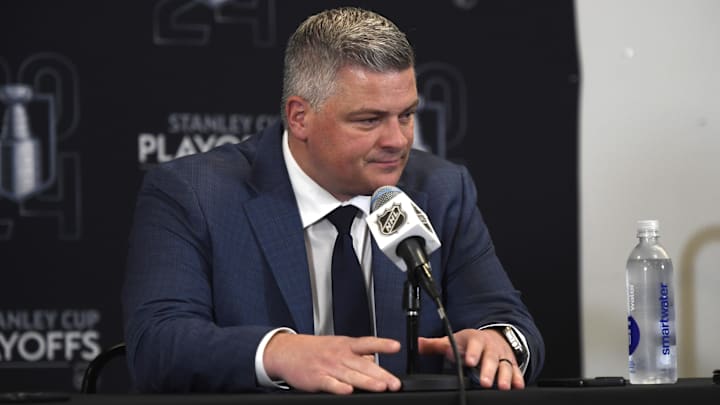The New Jersey Devils have enjoyed some timely moves that led to their 5-2-1 start. It hasn’t always been pretty, but the team is at the top of the NHL standings, and they are on pace for 113 points. While there has been some points that need to be addressed, including Jack Hughes’ production, recovering from injuries to Luke Hughes, Santeri Hatakka, and Brett Pesce, and Jacob Markstrom has been up and down while the defense has struggled in some moments. Even with all that said, there is so much more good than bad.
Keefe is enjoying a great start to his Devils coaching career, and he’s hitting most of the right buttons. The Devils have been able to bounce back from a loss, never losing two games in a row.
When looking at the situation Keefe is facing now compared to what he had with the Toronto Maple Leafs, there are a few stark differences leading to his current state. He has some players he can rely on that didn’t exist in Toronto. For one, it starts with the game’s most important position, one the Devils made it a point to upgrade this offseason.
1. Devils have solid goaltending
It just sounds weird to say the Devils have solid goaltending, but that’s the case right now. The Devils can rely on Jacob Markstrom to play pretty much every night, and Keefe is taking advantage of that. Markstrom started six of the Devils eight games. Jake Allen has been fantastic behind him, but we’d expect his play to be limited until there is some understanding about what his needs will be later in the season. Allen has a trade condition that if he plays more than 40 games this season, the Devils have to send a second-round pick to the Montreal Canadiens.
We know how much Tom Fitzgerald loves his second-round picks, so we see the Devils playing it safe with Allen. So, the Devils will go forth with Markstrom, and Sheldon Keefe is more than happy with that plan. Even with some stinker performances on his resume, Markstrom is still stopping shots at a .902 clip.
Over the past three years, the Maple Leafs started eight different goalies. There was never a true starter in Toronto. Every year, it seemed a different player stepped up, and Kyle Dubas made another decision to go cheap to take a chance at the position. There was no solid option.
Only Joseph Woll and Jack Campbell had a save percentage at all strengths over .910 over that three-year span. If we take out the special teams, the number jumps to six of eight. That brings us to our next point.
